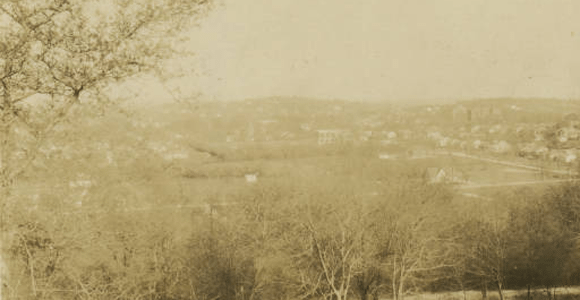Talk about a venture that was ahead of its time. In 1790 — when Nashville was a fort surrounded by a few homesteads — a man named John Hague built a water-powered cotton mill two miles upstream from the fort. In doing so, he financed the first great business failure in Nashville history and what may have been the first cotton mill in the entire South.
Hague once worked for a cotton mill in Manchester, England. According to a 1946 article in the Tennessee Historic Quarterly, he came to Virginia immediately after the American Revolution. Hague was an inventor; in 1788 a Philadelphia society known as the Friends of American Manufacturers awarded him a gold medal for improving a machine that carded cotton. He was also a smuggler, importing machines that spun and carded cotton at a time when it was against British law for such inventions to be exported to its former colony.
How Hague came up with the idea of moving to Nashville is — like many parts of his life — rather unclear. Perhaps the most important factor was that cotton grew so well in Middle Tennessee. Since he was running away from the British government, he may have been motivated by how isolated Nashville was at that time.
In any case, we know Hague arrived before August 1790, because that month a piece of land was conveyed to him. That parcel, by the way, is now the site of St. Mary’s Cathedral in downtown Nashville (330 Fifth Ave. N.).
Sometime during the next few months, Hague put together his cloth-producing enterprise. It was located in an already-built mill about four miles upstream of Nashville, where Mill Creek pours into the Cumberland River. Hague was hoping to use cotton from surrounding farms to produce materials such as velvet, corduroy and calico at the mill, which was powered by the creek itself. Some of the output could then be sold locally, but it was certainly Hague’s intention to sell his products in faraway markets.
As a reflection of his high hopes, Hague named his small business and the village immediately surrounding it after his hometown in England.
We don’t know how much Nashville’s first cotton factory actually produced. But getting people to work there was probably quite a challenge. Nashville was still the frontier, and survival was still the order of the day. This was an era when Native American attacks were fairly common.
So what became of Hague’s venture, which may be dubbed “the Lost Village of Manchester?” On June 15, 1793, the Knoxville Gazette — the main source of news about Nashville at a time when Middle Tennessee didn’t yet have a newspaper — reported that Native Americans attacked the cotton manufactory near Nashville. John Robertson, the military commander of the settlement, wrote a similar account to Gov. William Blount at about the same time.
The attack doomed the venture. If Hague had trouble getting people to work there before, it became impossible. A few weeks later he left Nashville for Virginia.
What makes Hague’s enterprise all the more remarkable is that the story itself was, for a long time, forgotten. Apparently, no Tennessee historian knew anything about Hague’s ill-fated attempt to make cloth in Nashville — until 1945, when a historian named Samuel Williams found a 1791 advertisement in the Knoxville Gazette soliciting workers for the factory. The ad said Hague’s cotton manufactory was in Manchester, which had led previous historians to think it was referring to the present seat of Coffee County. A New Deal-era book about Tennessee, produced by the federal government, mentioned the 1791 venture by “John Hague, of Manchester,” without realizing that this Manchester was in Nashville.
But Williams investigated, and it was he who discovered that the Manchester referred to in the 1791 ad was actually near Nashville. So “Little Manchester” was lost in more ways than one.
Today, there is no marker on or near the site of what may have been the first cotton mill in the South. To the best of my knowledge, no one has ever done any type of archaeological dig on the place, either. Last summer, I canoed to the confluence of Mill Creek and the Cumberland River. But my desire to search for signs of the old cotton factory was outweighed by my fear of poison ivy and chiggers.



